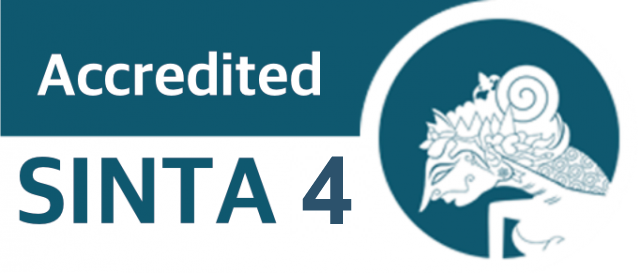Synthesis of Gold Nanoparticles Using Ascorbic Acid as a Bioreductor and the Effect of Uric Acid
DOI:
10.29303/jpm.v20i7.10235Published:
2025-11-24Issue:
Vol. 20 No. 7 (2025)Keywords:
Ascorbic Acid; Characterization; Gold Nanoparticle; Injection; Uric AcidArticles
Downloads
How to Cite
Downloads
Metrics
Abstract
Gold nanoparticles (AuNPs), ranging in size from 1 to 100 nm, represent one of the most significant advancements in metal-based technologies in recent years. Their application in the medical field, especially as drug delivery agents, is particularly noteworthy and demonstrates their transformative potential. This study aims to synthesize AuNPs using HAuCl4 as a precursor and ascorbic acid as a bioreductant at a concentration of 20 ppm with a bottom-up method. The result of the synthesis process yields a striking burgundy-colored solution, signifying the successful formation of gold nanoparticles. The results of UV-Vis characterization provided insightful data on the transformation of the HAuCl4 solution. Initially recorded at a wavelength of 314.60 nm, the solution underwent a notable shift to 523.50 nm after the synthesis process, demonstrating an absorbance value of 0.323. Furthermore, the transmission electron microscopy (TEM) analysis illuminated the unique characteristics of the synthesized nanoparticles, revealing an average particle size of 6.23 nm with the highest particle frequency in the range of 6-8 nm. Moreover, the result of clinical trials conducted with ten randomly selected volunteers, who received 20 ppm of AuNPs over a five-week period, demonstrated that seven out of ten participants experienced a significant reduction in uric acid levels, underscoring the therapeutic potential of gold nanoparticles. Microscopic observations following the injection revealed that volunteers with normal uric acid levels exhibited fewer leukocytes than those with elevated uric acid levels, who were noted to have leukocyte counts up to three times higher. In conclusion, the synthesis of AuNPs using ascorbic acid is marked by a wine-red solution and a significant absorption wavelength shift to the 500–600 nm range. The positive results of the clinical trial reflect the ability of AuNPs to lower uric acid levels, thereby paving the way for innovative nanotechnology-based therapeutic strategies in the medical field.
References
R. A. Ilahi, M. L. Firdaus dan H. Amir, “Pemanfaatan Nanopartikel Emas (NPE) Sebagai Pendeteksi Kadar Asam Urat Pada Urine dengan Metode Citra Digital,” Jurnal Pendidikan dan Ilmu Kimia, vol. 5, no. 2, pp. 135-140, 2021.
DOI: https://doi.org/10.33369/atp.v5i2.17113
A. Singh, H. A. Santoso, J. S. Kawi, E. Destra dan Monika, “Pemeriksaan Rutin Asam Urat dalam Rangka Pencegahan Timbulnya Arthritis Gout pada Kelompok Usia Produktif di Wilayah Krendang,” JPMNT : Jurnal Pengabdian Masyarakat Nian Tana, vol. 3, no. 1, pp. 45-54, 2025.
DOI: https://doi.org/10.59603/jpmnt.v3i1.667
Ibrahim, A. H. M. Prawata dan R. Widodo, “Pengaruh Konsumsi Madu Terhadap Kadar Asam Urat Pada Pasien Arthritis Gout Di Wilayah Kerja Puskesmas Surantih,” Jurnal Kesehatan Saintika Meditory, vol. 3, no. 1, pp. 42-51, 2020.
DOI:
https://api.semanticscholar.org/CorpusID:229474952
D. Anggraini, “Aspek Klinis Hiperurisemia,” Scientific Journal, vol. 1, no. 4, pp. 299-308, 2022.
DOI: https://doi.org/10.56260/sciena.v1i4.59
S. Khibari, S. Lahmadi, A. Beagan, F. Alharthi, A. Alsalme, K. Alzahrani, M. Almeataq, K. Alotaibi dan A. Alswieleh, “Gold Nanostructures On Polyelectrolyte-Brush-Modified Cellulose Membranes As a Synergistic Platform for Uric Acid detection,” Talanta, vol. 279, p. 126586, 2024.
DOI: https://doi.org/10.1016/j.talanta.2024.126586
B. Hartono, K. C. M. Likumauha, A. W. Nusawakan dan M. D. Kurniasari, “Gambaran Manajemen Nyeri Penderita Hiperuricemia,” Journal of Language and Health, vol. 5, no. 2, pp. 827-844, 2024.
DOI: https://doi.org/10.37287/jlh.v5i2.4032
M. I. F. Ali, S. Rammang dan S. M. Irnawan, “Hubungan Aktivitas Fisik dengan Kadar Asam Urat Pada Lansia Di Wilayah Kerja Panti Jompo Yayasan Al-Kautsar Palu,” Jurnal NERS, vol. 8, no. 1, pp. 964-969, 2024.
DOI: https://doi.org/10.31004/jn.v8i1.18800
M. Mahmudi, D. N. R. P. Safitri dan M. F. Mubin, “Penurunan Nyeri Dan Kadar Asam Urat Pada Penderita Gout Arthritis dengan Terapi Akupresur Pada Titik Taixi (KI 3),” Holistic Nursing Care Approach, vol. 4, no. 1, 2024.
DOI: https://doi.org/10.26714/hnca.v4i1.12873
N. W. A. S. Devi, “Sintesis dan Karakterisasi Nanopartikel Emas dari Bioreduktor Ekstrak Air Buah Andaliman (Zanthoxylum acanthopodium DC.),” JIM: Jurnal Ilmiah Mahaganesha, pp. 178-186, 2021.
M. Yafout, A. Ousaid, Y. Khayati dan I. S. El Otmani, “Old Nanoparticles As a Drug Delivery System for Standard Chemotherapeutics: A New Lead for Targeted Pharmacological Cancer Treatments,” Scientific African, vol. 11, 2021.
DOI: https://doi.org/10.1016/j.sciaf.2020.e00685
G. Alomari, S. Hamdan dan B. Al-Trad, “Gold Nanoparticles As a Promising Treatment for Diabetes and Its Complications: Current and Future Potentials,” Brazilian Journal of Pharmaceutical Sciences, vol. 57, 2021.
DOI: https://doi.org/10.1590/s2175-9790202000041 9040
I. Fratoddi, L. Benassi, E. Botti, C. Vaschieri, I. Venditti, H. Bessar, M. A. Samir, P. Azzoni, C. Magnoni, A. Costanzo, V. Casagrande, M. Federici, L. Bianchi dan G. Pellacani, “Effects of Topical Methotrexate Loaded Gold Nanoparticle In Cutaneous Inflammatory Mouse Model,” Nanomedicine: Nanotechnology, Biology and Medicine, vol. 17, pp. 276-286, 2019.
DOI: https://doi.org/10.1016/j.nano.2019.01.006
T. Taufikurohmah, . D. Supardjo dan Rusmini, “Utilization Of Nanogold And Nanosilver To Treat Herpes Disease: Case Study Of Herpes Transmission In Islamic Cottage Schools,” Proceedings of the National Seminar on Chemistry 2019 (SNK-19), 2019.
DOI: https://doi.org/10.2991/snk-19.2019.22
J. Sun, P. Zhuang, S. Wen, M. Ge, Z. Zhou, D. Li, C. Liu dan X. Mei, “Folic Acid-Modified Lysozyme Protected Gold Nanoclusters As an Effective Anti-Inflammatory Drug for Rapid Relief of Gout Flares In Hyperuricemic Rats,” Materials & Design, vol. 217, 2022.
DOI: https://doi.org/10.1016/j.matdes.2022.110642
M. Doudi dan M. Setorki, “The Effect of Gold Nanoparticle On Renal Function In Rats,” Nanomedicine Journal, vol. 1, no. 3, pp. 171-179, 2014.
DOI: 10.7508/nmj.2015.04.005
V. Gopinath, A. D. Mubarak, S. Priyadarshini, N. M. Priyadharsshini, N. Thajuddin dan P. Velusamy, “Biosynthesis of Silver Nanoparticles From Tribulus Terrestris and Its Antimicrobial Activity: A Novel Biological Approach,” Colloids and Surfaces B: Biointerfaces, vol. 96, pp. 69-74, 2012.
DOI: https://doi.org/10.1016/j.colsurfb.2012.03.023
F. D. Oktavia dan S. Sutoyo, “Skrining Fitokimia Total, dan Aktivitas Antioksidan Ekstrak Etanol Tumbuhan Selaginella doederleinii,” Jurnal Kimia Riset, vol. 6, no. 2, p. 141, 2021.
DOI: https://doi.org/10.20473/jkr.v6i2.30904
Y. Yusniar, N. Hindryawati dan R. Ruga, “Sintesis Nanopartikel Perak Menggunakan Reduktor Asam Askorbat,” In Prosiding Seminar Nasional Kimia, pp. 187-192, 2021.
A. Gęgotek dan E. Skrzydlewska, “Antioxidative and Anti-Inflammatory Activity of Ascorbic Acid,” Antioxidants, vol. 11, no. 10, p. 1993, 2022.
DOI: https://doi.org/10.3390/antiox11101993
H. Verdiani, D. Syafira dan H. Nugrahapraja, “Mini Review: Pengembangn Biosensor Kolorimetri Berbasis Agregasi Nanopartikel Emas,” KLOROFIL: Jurnal Ilmu Biologi dan Terapan, vol. 7, no. 1, 2023.
DOI: http://dx.doi.org/10.30821/kfl:jibt.v7i1.14657
R. D. Pertiwi, T. P. Utami dan Michelle, “Biosintesis dan Uji Antioksidan Nanopartikel Emas Menggunakan Kuersetin,” Archives Pharmacia, vol. 6, no. 2, pp. 99-116, 2024.
R. P. Putri dan S. O. N. Yudiastuti, “Green Synthesis dan Karakterisasi Nanopartikel Emas (AuNPs) Menggunakan Asam Askorbat dan Iradiasi Sinar UV,” Jurnal Kolaboratif Sains(JKS), vol. 7, no. 2, pp. 621-629, 2024.
DOI: 10.56338/jks.v7i2.4717
F. Q. ‘Aini dan T. Taufikurohmah, “The Effect of Nanogold-Nanosilver Injection on Increasing the Immunity of Community Affected by Covid-19,” International Journal of Current Science Research and Review, vol. 5, no. 4, 2022.
DOI: https://doi.org/10.47191/ijcsrr/V5-i4-34
N. Magfira dan H. Adnani, “Hubungan Aktivitas Fisik dan Riwayat Genetik dengan Kadar Asam Urat di Posyandu Cinta Lansia,” Jurnal Ilmu Keperawatan dan Kebidanan, vol. 12, no. 2, pp. 396-403, 2021.
DOI: https://doi.org/10.26751/jikk.v12i2.1033
R. Febriyani dan B. Santoso, “Kualitas Makroskopis dan Mikroskopis Morfologi Sel Lekosit Pada SADT Berdasarkan Variasi Suhu Pengeringan,” Medika Respati : Jurnal Ilmiah Kesehatan, vol. 15, no. 4, pp. 245-250, 2020.
DOI: https://doi.org/10.35842/mr.v15i4.281
A. Dewi, S. E. Putri dan P. Salempa, “Synthesis and Characterization of Gold Nanoparticles Using Trisodium Citrate as a Reductant,” Jambura Journal of Chemistry, vol. 2, no. 1, pp. 10-16, 2020.
DOI: https://doi.org/10.31004/jiik.v1i3.4458
C. D. Fernanda dan T. Taufikurohmah, “Green Synthesis Gold Nanoparticles using Bioreductor of Butterfly Pea (Clitoria ternatea L.) Leaf Extract as an Antioxidant,” Jurnal Pijar Mipa, vol. 19, no. 4, pp. 726-731, 2024.
DOI: https://doi.org/10.29303/jpm.v19i4.7170
M. Hassanisaadi, G. H. S. Bonjar, A. Rahdar, S. Pandey, A. Hosseinipour dan R. Abdolshahi, “Environmentally Safe Biosynthesis of Gold Nanoparticles Using Plant Water Extracts,” Nanomaterials, vol. 11, no. 8, p. 2033, 2021.
DOI: https://doi.org/10.3390/nano11082033
D. Roy, H. M. Johnson, M. J. Hurlock, K. Roy, Q. Zhang dan L. M. Moreau, “Exploring the Complex Chemistry and Degradation of Ascorbic Acid in Aqueous Nanoparticle Synthesis,” Angewandte Chemie International Edition, vol. 63, no. 52, 2024.
DOI: https://doi.org/10.1002/anie.202412542
T. S. Rodrigues, M. Zhao, T. Yang, K. D. Gilroy, A. G. M. da Silva, P. H. C. Camargo dan Y. Xia, “Synthesis of Colloidal Metal Nanocrystals: A Comprehensive Review on the Reductants,” Chemistry – A European Journal, vol. 24, no. 64, pp. 16944-16963, 2018.
DOI: https://doi.org/10.1002/chem.201802194
A. R. Ansyarif dan D. N. Sari, “Pengaruh pH Terhadap Sintesis Nanopartikel Emas (AuNPs) dengan Agen Penudung Asam Glutamat,” Cokroaminoto Journal of Chemical Science, vol. 6, no. 1, pp. 14-17, 2024.
DOI: https://science.e-journal.my.id/cjcs/article/vie w/202
E. I. Fazrin, A. I. Naviardianti, S. Wyantuti, S. Gaffar dan Y. W. Hartati, “Review: Sintesis dan Karakterisasi Nanopartikel Emas (AuNP) Serta Konjugasi AuNP dengan DNA dalam Aplikasi Biosensor Elektrokimia,” PENDIPA Journal of Science Education, vol. 4, no. 2, pp. 21-39, 2020.
DOI: https://doi.org/10.33369/pendipa.4.2.21-39
R. Indriyani dan T. Taufikurohmah, “Green Synthesis of Gold Nanoparticles Using Moringa Oleifera Leaf Extract Bioreductor (Moringa oleifera L.) and Activity Test as Antioxidant,” Jurnal Pijar Mipa, vol. 19, no. 5, pp. 881-887, 2024.
DOI: https://doi.org/10.29303/jpm.v19i5.7325
N. R. Aprilia dan T. Taufikurohmah, “Green Synthesis of Gold Nanoparticles Using Basella alba Leaf Extract and Their Antioxidant Activity,” Jurnal Kimia Sains dan Aplikasi, vol. 27, no. 8, pp. 381-387, 2024.
DOI: https://doi.org/10.14710/jksa.27.8.381-387
I. Hammami, N. M. Alabdallah, A. A. Jomaa dan M. Kamoun, “Gold Nanoparticles: Synthesis Properties and Applications,” Journal of King Saud University - Science, vol. 33, no. 7, p. 101560, 2021.
DOI: https://doi.org/10.1016/j.jksus.2021.101560
K. Koushki, S. S. Keshavarz, M. Keshavarz, E. E. Bezsonov, T. Sathyapalan dan A. Sahebkar, “Gold Nanoparticles: Multifaceted Roles in the Management of Autoimmune Disorders,” Biomolecules, vol. 11, no. 9, p. 1289, 2021.
DOI: https://doi.org/10.3390/biom11091289
Y. Huang, J. Wang, K. Jiang dan E. J. Chung, “Improving Kidney Targeting: The Influence of Nanoparticle Physicochemical Properties on Kidney Interactions,” Journal of Controlled Release, vol. 334, pp. 127-137, 2021.
DOI: https://doi.org/10.1016/j.jconrel.2021.04.016
V. F. M. Kussoy, R. Kundre dan F. Wowiling, “Kebiasaan Makan Makanan Tinggi Purin dengan Kadar Asam Urat di Puskesmas,” JURNAL KEPERAWATAN, vol. 19, no. 4, pp. 726-731, 2024.
DOI: https://doi.org/10.35790/jkp.v7i2.27476
P. Paul, L. Chacko, T. K. Dua, P. Chakraborty, U. Paul, V. V. Phulchand, N. K. Jha, S. K. Jha, R. Kandimalla dan S. Dewanjee, “Nanomedicines for The Management of Diabetic Nephropathy: Present Progress and Prospects,” Frontiers in Endocrinology, vol. 14, 2023.
DOI: https://doi.org/10.3389/fendo.2023.1236686
A. Tigner, S. A. Ibrahim dan I. V. Murray, Histology, White Blood Cell, Texas: Treasure Island (FL): StatPearls Publishing, 2022.
DOI: https://www.ncbi.nlm.nih.gov/books/NBK563148/
I. M. Buliani dan A. Mustakim, “Analisis Struktur Jumlah Sel Darah untuk Pembelajaran pada Mahasiswa Farmasi,” Jurnal Cakrawala Pendidikan Dan Biologi, vol. 2, no. 1, pp. 64-73, 2025.
DOI: https://doi.org/10.61132/jucapenbi.v2i1.142
G. L. Burn, A. Foti, G. Marsman, D. F. Patel dan A. Zychlinsky, “The Neutrophil,” Immunity, vol. 54, no. 7, pp. 1377-1391, 2021.
Author Biographies
Yulle Rachmawati, Department of Chemistry, Faculty of Mathematics and Natural Sciences, Universitas Negeri Surabaya
Titik Taufikurohmah, Department of Chemistry, Faculty of Mathematics and Natural Sciences, Universitas Negeri Surabaya
License
Copyright (c) 2025 Yulle Rachmawati, Titik Taufikurohmah

This work is licensed under a Creative Commons Attribution 4.0 International License.
The following terms apply to authors who publish in this journal:
1. Authors retain copyright and grant the journal first publication rights, with the work simultaneously licensed under a Creative Commons Attribution License 4.0 International License (CC-BY License) that allows others to share the work with an acknowledgment of the work's authorship and first publication in this journal.
2. Authors may enter into separate, additional contractual arrangements for the non-exclusive distribution of the journal's published version of the work (e.g., posting it to an institutional repository or publishing it in a book), acknowledging its initial publication in this journal.
3. Before and during the submission process, authors are permitted and encouraged to post their work online (e.g., in institutional repositories or on their website), as this can lead to productive exchanges as well as earlier and greater citation of published work (See The Effect of Open Access).











